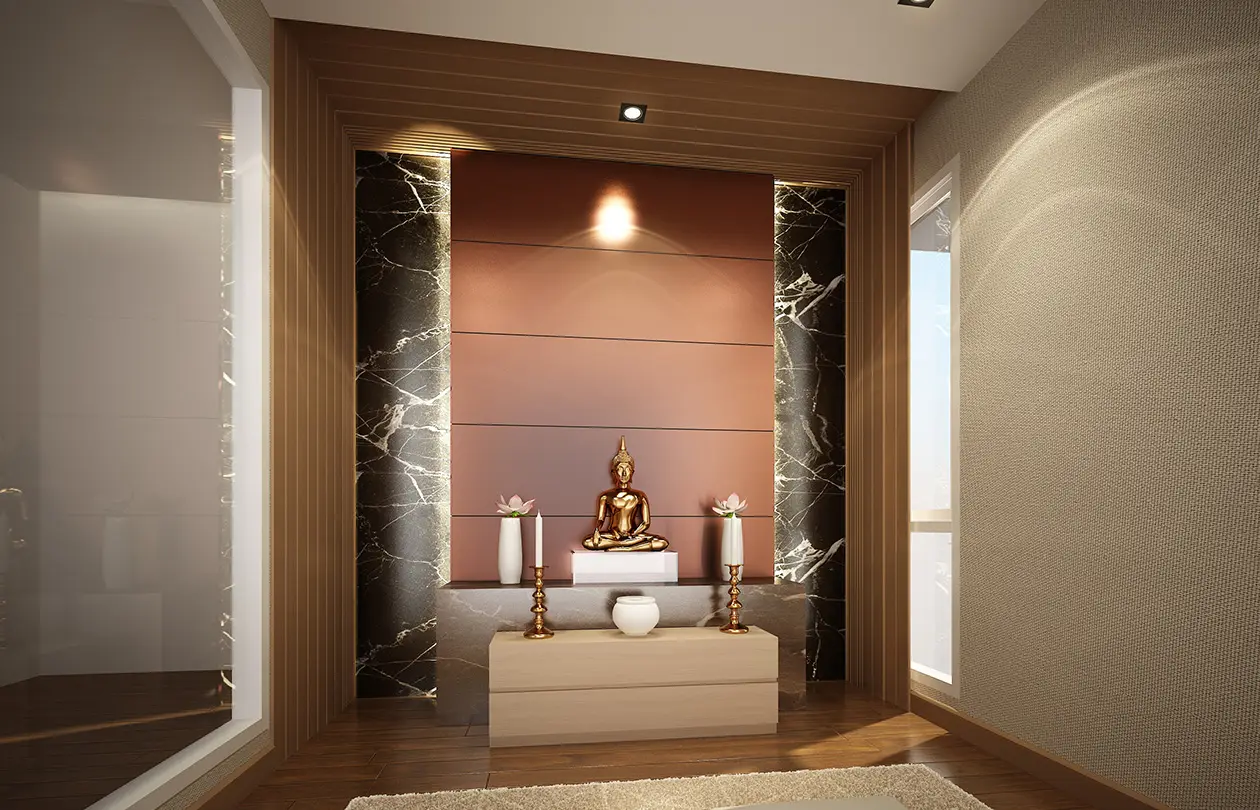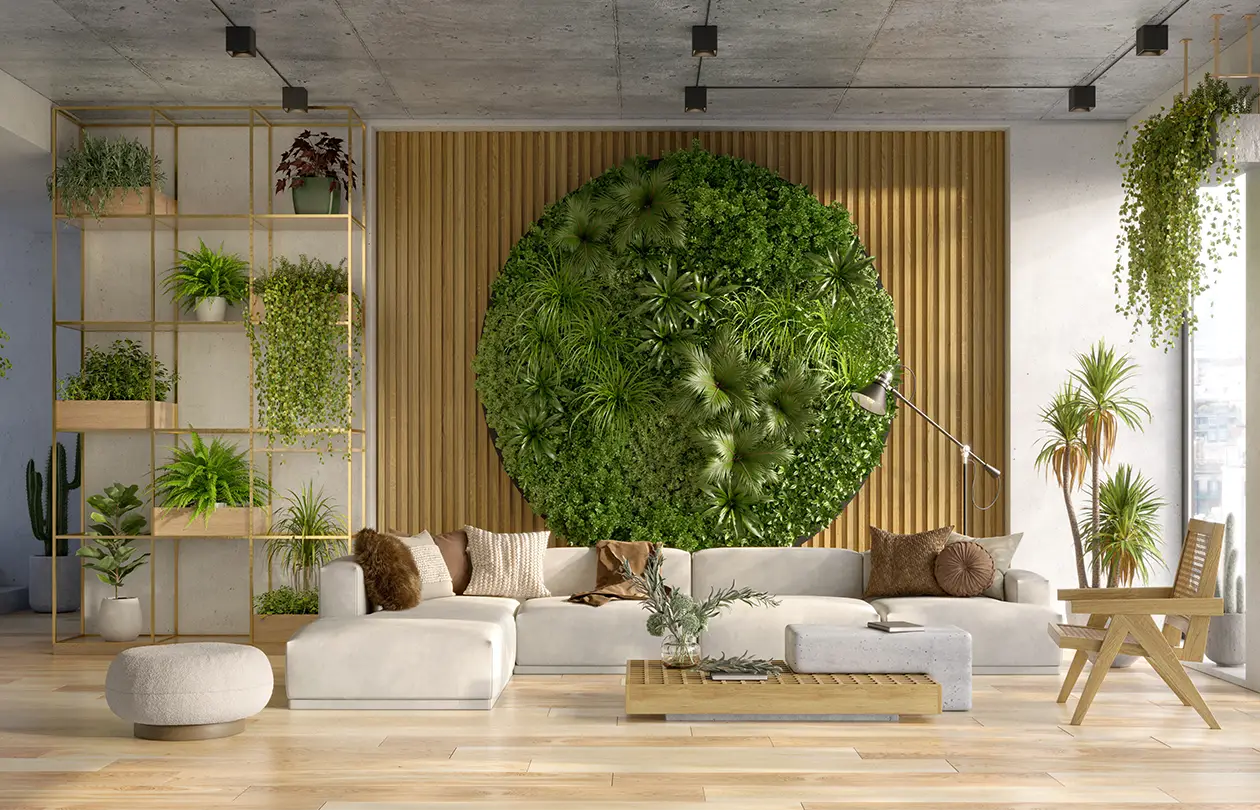Living in a small space doesn’t mean living with limitations. With the right interior design choices, even the most compact apartment or room can feel airy, open, and welcoming. Whether you’re in a city studio, a cozy apartment, or a compact home, smart design tricks can help you create the illusion of space without sacrificing style. At Kosha Spaces, we believe every home—big or small—deserves to feel expansive, beautiful, and truly yours.
In this blog, let’s explore practical, aesthetic, and transformative hacks to make your small space look bigger.
1. Start with a Light Color Palette
Color is one of the most powerful tools in interior design. Light and neutral tones reflect natural light, making a room appear larger and more open.
- Best colors to try: Whites, creams, beiges, soft pastels, and light greys.
- Add depth with accents—soft blues, earthy greens, or muted pinks.
- Avoid dark, heavy shades on all walls, as they tend to shrink a space visually.
Pro Tip: If you love dark tones, use them in accents like cushions, rugs, or a statement wall, but balance them with lighter surroundings.
2. Use Mirrors to Double the Space
Mirrors are a designer’s secret weapon when it comes to expanding a small room. They reflect light, create depth, and trick the eye into seeing more space.
- A large mirror across from a window can instantly brighten a room.
- Use mirrored wardrobes or panels in hallways.
- Gallery-style smaller mirrors can add personality while enhancing space.
Kosha Insight: A well-placed floor-to-ceiling mirror behind furniture adds luxury and makes your interiors feel grander.
3. Embrace Minimalism – Less Is More
Small spaces demand intentional design. Clutter can make even a medium-sized room feel cramped.
- Opt for multi-functional furniture (like sofa beds, ottomans with storage, nesting tables).
- Keep décor elements purposeful rather than overwhelming.
- Focus on quality over quantity—a few statement pieces have more impact than dozens of small items.
Minimalism not only makes your space appear larger but also creates a calm, serene environment.
4. Choose Furniture Wisely
Furniture has the biggest impact on how spacious or tight a room feels.
- Go for proportion: Large, bulky furniture overwhelms small spaces. Instead, choose sleek, raised furniture with visible legs.
- Opt for glass and acrylic: Transparent tables and chairs take up less visual space.
- Multi-purpose designs: A dining table that doubles as a work desk, or a wall-mounted foldable study unit, saves space.
Pro Tip: Avoid pushing all furniture against the walls—leaving breathing room creates flow and openness.
5. Use Vertical Space
When floor space is limited, look upward.
- Add floating shelves for books and décor.
- Install tall cupboards instead of wide ones.
- Hang curtains close to the ceiling to elongate the height of the room.
- Vertical mirrors or wall art naturally draw the eye upward, giving a sense of spaciousness.
At Kosha Spaces, we often design floor-to-ceiling shelving units to maximize storage while keeping the footprint minimal.
6. Play with Lighting
Good lighting transforms any room, but in small spaces, it’s essential.
- Natural light: Keep windows uncluttered. Use sheer curtains instead of heavy drapes.
- Layered lighting: Combine ambient (ceiling), task (desk/floor lamps), and accent (wall sconces, strip lights) to create depth.
- Avoid bulky fixtures: Instead, choose sleek pendants or recessed lights.
Kosha Insight: Light placed strategically along walls or shelves gives the illusion of depth, expanding the room visually.
7. Keep Flooring Seamless
Breaking up flooring with different materials can make small spaces feel chopped up.
- Use the same flooring across rooms to create a seamless flow.
- Large tiles or wide planks give the illusion of more space compared to smaller tiles.
- Rugs can still be used but choose lighter shades and avoid too many patterns.
8. Add Strategic Accents
While minimalism is key, accents add personality.
- A statement wall with textured wallpaper or wood paneling can elongate a room.
- Vertical stripes (on wallpaper, upholstery, or curtains) enhance height.
- Glass doors, sliding panels, and open shelving maintain visual continuity.
Remember, accents should enhance space, not dominate it.
9. Keep It Organized
Organization is non-negotiable in compact living.
- Built-in storage units keep things hidden but accessible.
- Use baskets, bins, and organizers to avoid visual clutter.
- Keep surfaces clear—nothing makes a room feel smaller than overcrowded shelves and countertops.
At Kosha Spaces, we design homes where storage blends seamlessly into décor, making organization effortless.
10. Add a Touch of Green
Plants bring freshness and openness into a space.
- Choose tall, slim plants like snake plants or bamboo palms to add height.
- Wall-mounted planters save floor space.
- Small succulents on shelves add life without overwhelming the room.
Greenery adds vibrancy while balancing minimalism with warmth.
Final Thoughts
Designing a small space is not about compromising—it’s about being intentional, clever, and creative. With thoughtful choices in color, furniture, lighting, and organization, even the most compact rooms can feel grand and luxurious.
At Kosha Spaces, we specialize in creating interiors that reflect your personality while maximizing space and functionality. After all, luxury is not about size—it’s about how a home makes you feel.
So, if your small space feels like it’s shrinking around you, remember: the right design can expand it beyond imagination.



